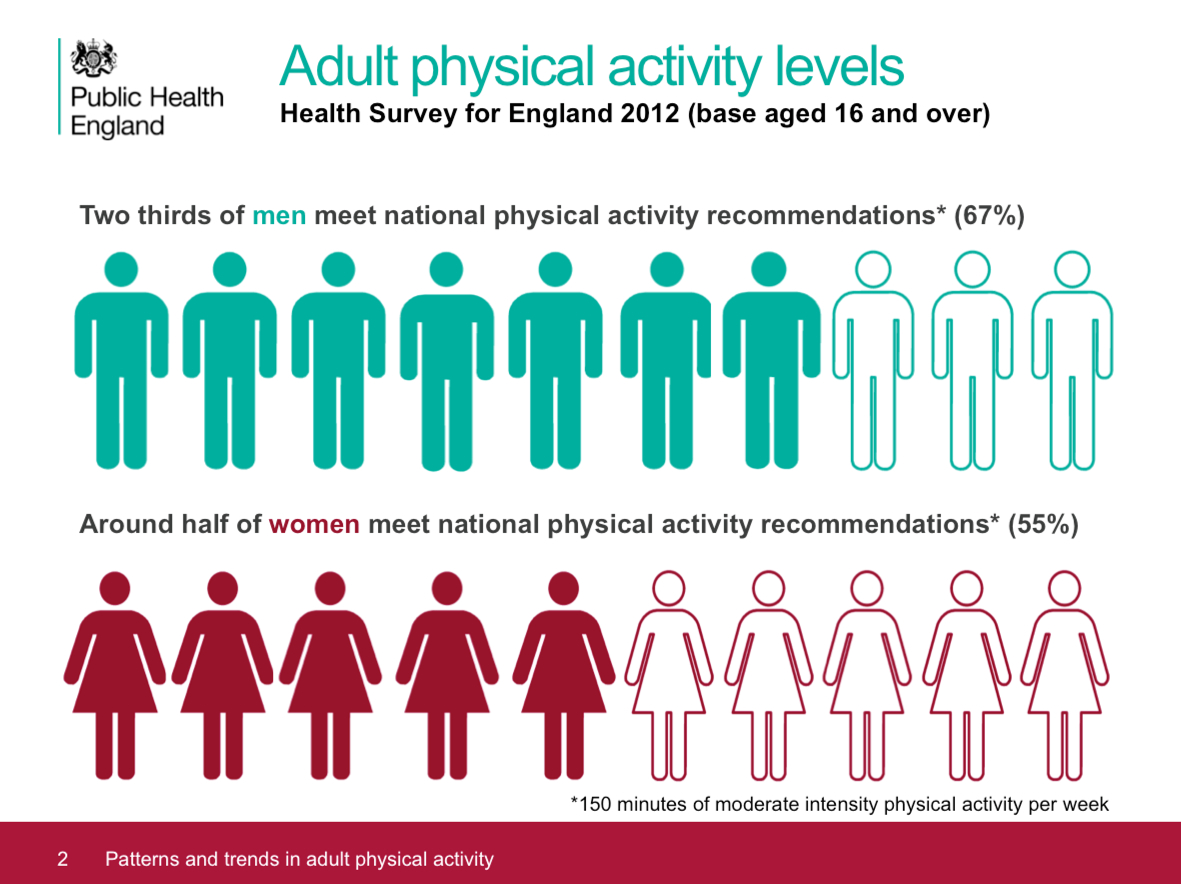Not building exercise into daily life
A primary cause of the rise in obesity in the UK in recent decades has been a decline in energy expended rather than rise in energy intake; with the changing pattern towards more sedentary lifestyles appearing to be a key factor in this.

Slide: PHE Adult physical activity slide set – July 2015 [6]Around one in two women and a third of men in England are damaging their health through a lack of physical activity. [8]
- over one in four women and one in five men do less than 30 minutes of physical activity a week, so are classified as ‘inactive’. [2]
- physical inactivity is the fourth largest cause of disease and disability in the UK. [7]
Snowdon [1] notes:
If one looks at day-to-day exercise and occupational physical activity, it becomes clear that lifestyles have become more sedentary. The transition from manual labour to office work saw jobs in agriculture decline from eleven to two per cent of employment in the twentieth century while manufacturing jobs declined from 28 to 14 per cent of employment (Lindsay, 2003) [4]. Britons are walking less (from 255 miles per year in 1976 to 179 miles in 2010) and cycling less (from 51 miles per year in 1976 to 42 miles in 2010).
Only 18 per cent of adults report doing any moderate or vigorous physical activity at work while 63 per cent never climb stairs at work and 40 per cent spend no time walking at work (British Heart Foundation, 2012b: 58-59) [3]. Outside of work, 63 per cent report spending less than ten minutes a day walking and 53 per cent do no sports or exercise whatsoever (ibid.: 52-4). Add to this the ubiquity of labour-saving devices and it is clear that Britons today have less need, and fewer opportunities, for physical activity both in the workplace and at home."